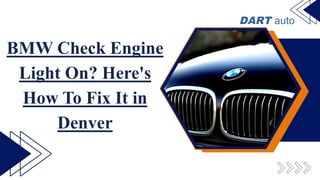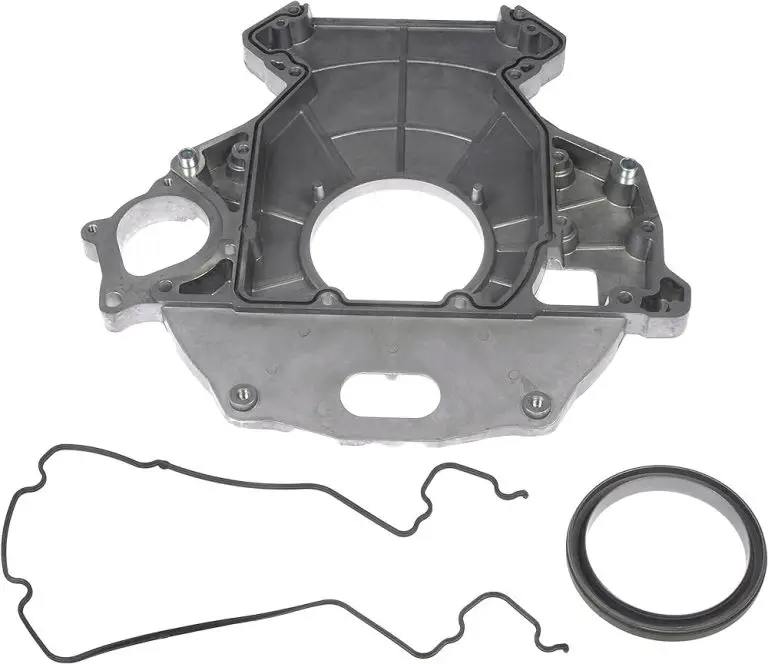Bmw Engine Light : Troubleshooting Tips to Resolve it
The BMW engine light is an indicator that something is wrong with the vehicle and needs to be fixed. It is important to address the issue promptly to avoid potential damage to the engine components.
Ignoring the warning can lead to costly repairs. AI suggestion: The BMW engine light serves as a warning sign of potential issues with your vehicle that require immediate attention to prevent any further damage to the engine components. It is recommended to address the problem as soon as possible to avoid expensive repairs in the future.
Common Causes Of Bmw Engine Light
The BMW engine light can come on due to various reasons, including faulty oxygen sensors, loose gas caps, or failing catalytic converters. Ignoring the warnings could lead to major engine damage, so it’s important to address any issues as soon as possible.
It’s advisable to have the vehicle checked by a professional to diagnose and fix the problem promptly.
Faulty Oxygen Sensor
An oxygen sensor plays a crucial role in the proper functioning of a BMW engine. When it starts to fail, it can trigger the engine light to illuminate. This sensor measures the amount of oxygen in the exhaust gases and sends this information to the engine control unit (ECU). A faulty oxygen sensor can result in incorrect fuel-air mixture, leading to poor engine performance, reduced fuel efficiency, and increased emissions. If the oxygen sensor is the cause of the engine light, it is necessary to replace it to avoid further damage to the engine.
Low Oil Level
Another common cause for the BMW engine light to turn on is a low oil level. The engine oil is crucial for lubricating and cooling the engine components. If the oil level drops below the recommended level, it can cause engine overheating and premature wear and tear. When the engine control unit detects low oil pressure, it triggers the engine light to alert the driver. It is essential to regularly check the oil level and add oil if necessary to prevent engine damage and ensure optimal engine performance.
Malfunctioning Catalytic Converter
A malfunctioning catalytic converter can also be the culprit behind the BMW engine light. The catalytic converter’s role is to reduce harmful emissions by converting them into less harmful gases. Over time, it can get clogged or damaged, leading to decreased performance and increased emissions. When the engine control unit detects an issue with the catalytic converter, it illuminates the engine light. If left unresolved, a faulty catalytic converter can lead to reduced fuel efficiency and potential damage to other engine components.
In conclusion, several common causes can trigger the engine light in a BMW. A faulty oxygen sensor, low oil level, and malfunctioning catalytic converter are among the most prevalent reasons. It is crucial to address these issues promptly to avoid further damage to the engine and ensure optimal vehicle performance. If you notice the engine light illuminating, it is recommended to consult a professional mechanic or BMW service center to diagnose and resolve the problem.

Credit: www.autozone.com
Troubleshooting Tips
If your BMW engine light comes on, it indicates a potential issue that needs attention to prevent further damage. Follow diagnostic steps like using a code scanner to identify the problem and consider checking the oxygen sensor, a common culprit.
Avoid driving with the light on to prevent costly repairs.
How To Use A Code Scanner
If your BMW’s engine light is on, one of the first steps you can take to troubleshoot the issue is to use a code scanner. A code scanner is a device that connects to your car’s onboard diagnostic (OBD) system and retrieves fault codes stored in the system. These codes can give you valuable information about the specific problem causing the engine light to turn on.
To use a code scanner, follow these steps:
- Locate the OBD port in your BMW. The port is usually located under the dashboard on the driver’s side of the vehicle.
- Plug the code scanner into the OBD port. Ensure that the scanner is securely connected.
- Turn the ignition key to the “ON” position, but do not start the engine.
- Wait for the code scanner to establish a connection with your BMW’s OBD system. This may take a few seconds.
- Once the connection is established, follow the instructions on the code scanner’s display to read the fault codes.
- Take note of the fault codes displayed by the scanner. These codes will help you identify the specific issue causing the engine light to come on.
Resetting The Check Engine Light
After using a code scanner to retrieve the fault codes, you may want to reset the check engine light. Resetting the light will turn it off temporarily, but it is important to note that it will not fix the underlying problem causing the light to come on. To reset the check engine light, follow these steps:
- Ensure the ignition key is in the “OFF” position.
- Disconnect the negative terminal of the vehicle’s battery. This will disconnect the power supply to the engine control unit (ECU) and reset the check engine light.
- Leave the battery disconnected for at least 15 minutes to allow the ECU to fully reset.
- Reconnect the negative terminal of the battery.
- Start the engine and check if the check engine light is turned off. If it stays off, the reset was successful.
Understanding Fault Codes
When using a code scanner, you will come across fault codes, which are alphanumeric codes that indicate specific issues with your BMW. Understanding these codes can help you diagnose and fix the problem causing the check engine light to illuminate. Here are some common fault codes and their possible meanings:
| Fault Code | Possible Meaning |
|---|---|
| P0300 | Random/Multiple Cylinder Misfire Detected |
| P0171 | Fuel System Too Lean |
| P0420 | Catalyst System Efficiency Below Threshold |
| P0455 | Evaporative Emission System Leak Detected (Large Leak) |
Each fault code corresponds to a specific problem, and once you have identified the code, you can research further or consult a professional for guidance on how to fix the underlying issue.
When To Seek Professional Assistance
If the BMW engine light is on, it’s important to seek professional assistance promptly to diagnose and resolve the underlying issue. Ignoring the warning could lead to further damage and more expensive repairs down the line.
Persistent Check Engine Light
If the check engine light remains illuminated, professional help is recommended to diagnose and fix the underlying issue.
Unusual Engine Noises
Unusual noises from the engine should prompt a visit to a professional to prevent potential damage.
Loss Of Power
If your BMW experiences a sudden loss of power, seek professional assistance immediately to avoid further complications.

Credit: www.slideshare.net
Preventive Maintenance
If your BMW engine light is on, it’s crucial to address the issue promptly. Ignoring the warning can lead to potential damage and expensive repairs. Get your vehicle checked by a professional to diagnose the problem and ensure optimal performance.
Regular Vehicle Inspections
Regular vehicle inspections play a crucial role in ensuring the health and performance of your BMW engine. By having your vehicle inspected at regular intervals, potential issues can be identified and addressed before they escalate, saving you from costly repairs.
Monitoring Fluid Levels
Monitoring fluid levels such as oil, coolant, and brake fluid is essential for the proper functioning of your BMW engine. Ensuring these fluids are at the optimal levels helps in preventing overheating and wear and tear of engine components.
Following Manufacturer’s Maintenance Schedule
Adhering to the manufacturer’s maintenance schedule is crucial in prolonging the life of your BMW engine. This includes routine check-ups and service intervals, which are designed to address potential problems before they escalate, ensuring your engine runs smoothly and efficiently.

Credit: lightcheckup.com
Frequently Asked Questions On Bmw Engine Light
What Does Engine Light Mean On Bmw?
The engine light on a BMW signals potential failure and requires immediate attention to prevent further damage.
Can I Drive Bmw With Engine Light On?
It is not advisable to drive a BMW with the engine light on as it signifies a potential issue that needs immediate attention to avoid costly damage. Get your vehicle checked as soon as possible to prevent any major damage to the engine components.
What Is The Most Common Reason For Check Engine Light?
The most common reason for a check engine light is a failing oxygen sensor. It measures unburned oxygen in the exhaust system.
Will Bmw Check Engine Light Reset Itself?
The BMW check engine light will reset itself once the issue causing the light to come on has been fixed.
Conclusion
If your BMW’s engine light is on, don’t ignore it. Get it checked to prevent costly damage. Resolve issues promptly for smooth driving. Trust experts for a reliable solution. Drive with confidence knowing your vehicle is in top shape. Prioritize maintenance to keep your BMW running optimally.






